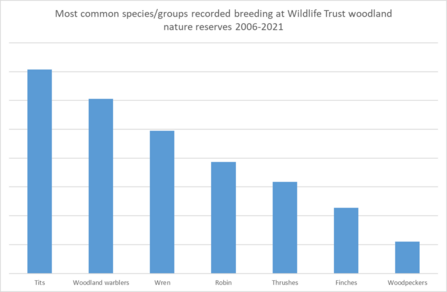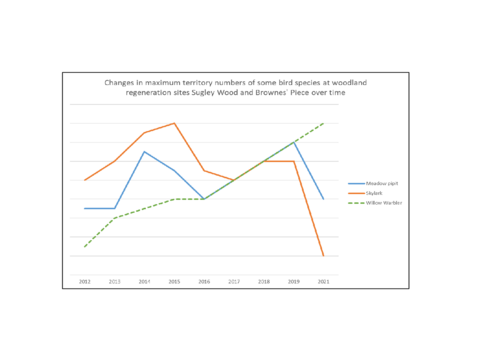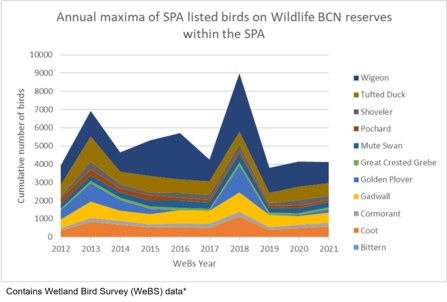Why do we monitor birds?
All bird species records are valuable in themselves. They form part of our own datasets which we can compare over time, to look for trends at any given site. We can also contribute records to national monitoring schemes. Some of our reserves which have local or national conservation designations (e.g. Local Wildlife Site, Site of Special Scientific Interest) were selected because of important bird populations of particular species. At these sites we can look specifically at how those species are doing. Many species have distinct habitat requirements, especially for nesting, so bird records can also tell us about habitat condition and structure.
Breeding birds
Our volunteers are currently involved in breeding bird surveys at 23 nature reserves, many of which have more than one survey. The surveys involve six early morning visits between March and June, walking a fixed transect and recording on a map all species seen or heard. The maps are then analysed to estimate the number of territories held by each species, to give an indication of breeding. When looking at the data, we can split birds into categories. This can include species groups or groups based on nesting choices, which can then tell us more about the site. Many woodland warbler species like to nest in low, dense scrub, so high numbers of these species would indicate there is good understorey structure. High numbers of cavity nesters (such as tits and woodpeckers) show that standing deadwood features are frequent on a site.
We can also compare trends on our own Wildlife Trust sites with national trends, to help flag up whether any significant changes are the direct result of our management, or are part of more widespread change.




